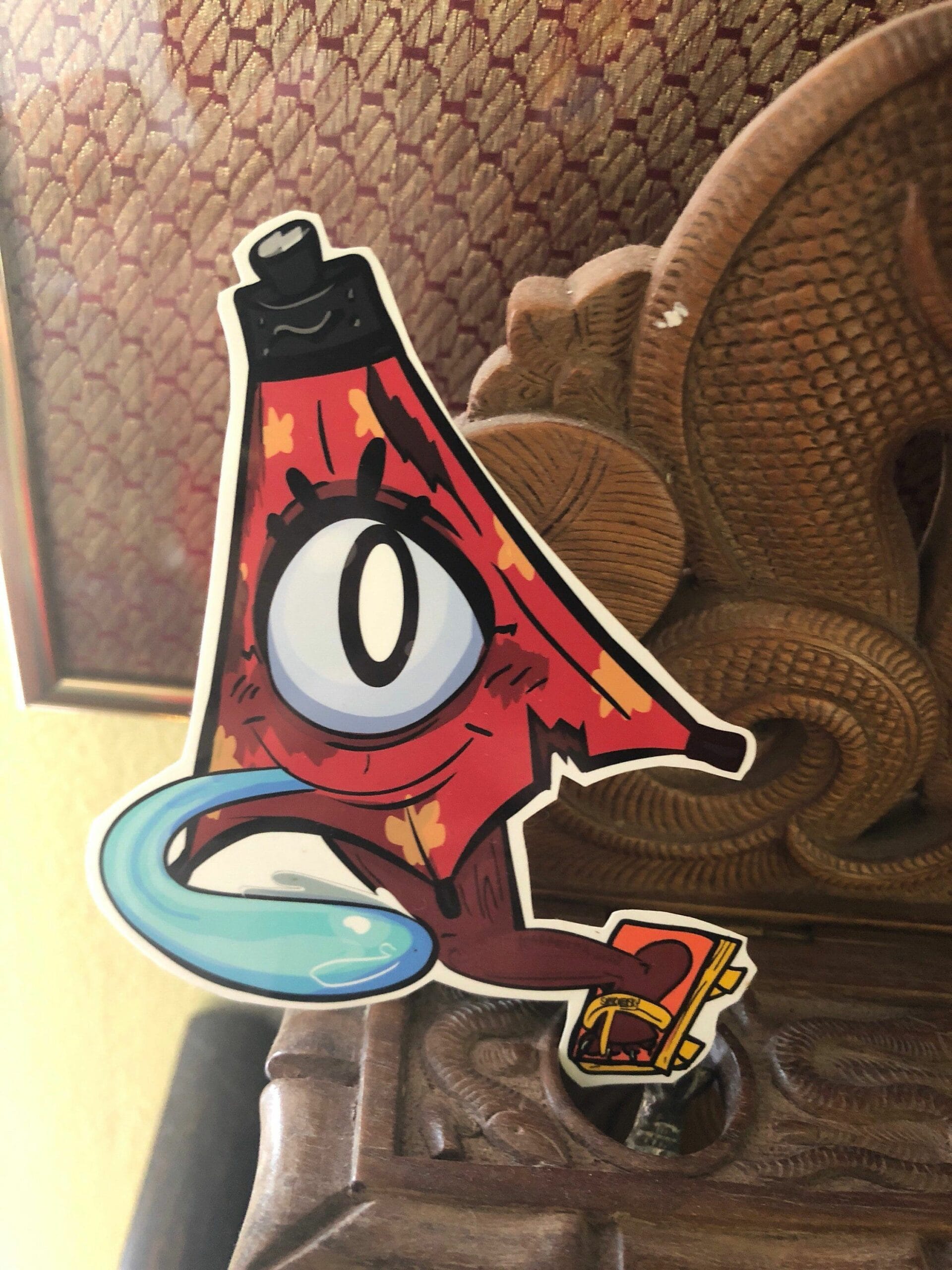Have you ever heard of umbrella ghosts? If you’re a fan of Japanese culture or folklore, then you might have stumbled upon these mysterious beings known as kasa-obake. Picture a large, old-fashioned umbrella with a single, glowing eye that floats eerily in the twilight. These umbrella yokai, as they’re called, have been haunting Japanese folklore for centuries, capturing the fascination of people from all walks of life. Let’s dive into their captivating world, exploring the legends, cultural significance, and enduring presence of kasa-obake in the tapestry of Japanese storytelling.
The Enigmatic World of Umbrella Yokai
Have you ever heard of umbrella yokai? They’re like something out of a spooky Japanese tale—spirits that dwell in old, forgotten umbrellas. Imagine a dark and stormy night, the wind howling through the streets, and suddenly, you spot an old umbrella scuttling along, its single eye glowing in the darkness. That’s a kasa-obake, as they’re known in Japan, which translates to “umbrella ghost.”
These eerie creatures are part of a larger belief in Japanese folklore called tsukumogami. The idea is that everyday objects, after being around for a really long time—like, a hundred years!—can gain a spirit of their own. It’s like how some people believe old houses can be haunted, but in this case, it applies to just about anything.
While the idea of tsukumogami has been around for ages, the image of the umbrella yokai we know today, the one with a single leg and a creepy eye, likely became popular during the Edo period (1600s-1800s). This era in Japan was a time of great change and artistic flourishing, and it seems that’s when these spooky umbrella spirits really took hold of people’s imaginations.
But the umbrella yokai are more than just scary stories. They remind us to be mindful of the things we own and to treat them with respect. This idea ties into the Shinto belief that spirits exist everywhere in nature, even in inanimate objects. So, tossing out that old, tattered umbrella might not be the best idea!
What makes these umbrella yokai so fascinating is that they’ve managed to stay relevant throughout the years. They pop up in modern manga, anime, and video games, captivating new audiences. Some even see them as reflecting our anxieties about throwing things away in a world obsessed with buying new stuff.
Umbrella yokai, with their blend of folklore, mythology, and cultural meaning, offer a glimpse into the rich tapestry of Japanese storytelling. These spooky spectres, forever linked to the image of a one-eyed, one-legged ghost lurking in the shadows, continue to fascinate and intrigue us. They show how, even in our modern world, old stories still have the power to capture our imaginations and make us wonder about the mysteries hiding in plain sight.
What Exactly Is a Yōkai Umbrella?
You’ve probably heard of Japanese ghosts and goblins, but get ready to meet the Kasa-obake—a mischievous spirit that brings new meaning to the phrase “raining cats and dogs.” Imagine a lonely, forgotten umbrella, tossed aside and left to gather dust. In Japanese folklore, that’s prime real estate for a spirit to move in, and that’s exactly how the Kasa-obake is born.
This isn’t your average umbrella, though. Over time, this ordinary object absorbs enough spiritual energy to become a “tsukumogami,” basically a yokai with an old soul (over 100 years old, to be exact!). Picture this: one giant, googly eye blinks open on the umbrella’s canopy, a long, slimy tongue rolls out from the center, and a single, sandaled foot taps impatiently, ready to chase unsuspecting humans.
The Kasa-obake isn’t just about jump scares, though. It reflects a deep respect for the world around us. Ancient Shinto beliefs, which are still very much alive in Japan, suggest that spirits can reside in all sorts of things, even everyday objects. So, think twice before you throw out that old toaster!
The Kasa-obake’s story reminds us to treat our belongings with care because who knows, maybe they have feelings too! And besides, you wouldn’t want to find yourself on the wrong side of a grumpy, one-legged umbrella on a stormy night, would you? Even today, the Kasa-obake continues to pop up in Japanese culture, from spooky stories to video games and manga. It’s a playful reminder that the world is full of surprises, especially if you know where to look!
Friend or Fiend? The True Nature of the Kasa-obake
Now, about whether these umbrella spirits are friendly or not… well, it’s a bit of a mixed bag. It’s like asking if all dogs are friendly—some might lick your face, and others might give you the side-eye.
Many tales portray Kasa-obake as mischievous tricksters, more interested in giving you a little fright than causing any real harm. Imagine walking down a dark street and feeling a ghostly tongue on your neck—startling, sure, but probably more funny than scary afterward. They’ve also been known to rearrange furniture or hide your keys, just to keep things interesting.
However, there are darker whispers, too. Some stories paint Kasa-obake as creatures capable of real harm, even going so far as to attack people. These accounts are less common, but they do exist, adding a layer of uncertainty to their true nature.
So, are they harmless pranksters or something more sinister? The folklore doesn’t give us a definitive answer. The truth is likely somewhere in between. Perhaps their behavior depends on how they’re treated, or maybe some Kasa-obake are just grumpier than others.
If you ever find yourself face-to-face with a one-legged, one-eyed umbrella, it’s probably best to err on the side of caution. A polite bow and a quick “excuse me” couldn’t hurt, right?
Karakasa Antics: A Catalogue of Mischief
So, we know that Karakasa are these mischievous Japanese spirits that come from old, forgotten umbrellas, right? They’ve got this whole spooky thing going on—one leg, one big eye, often a long, creepy tongue. But, even though they look like they could be trouble, they’re actually more into playful pranks than anything truly scary.
Now, you might be wondering, “What kind of pranks are we talking about?” Well, imagine this: You’re just minding your own business when suddenly, you feel this cold, slimy sensation on the back of your neck! You spin around, and there’s nothing there except maybe a fleeting glimpse of a one-legged umbrella hopping away. That, my friend, is a classic Karakasa move—they love a good scare!
But their mischievous streak doesn’t end there. They’re also notorious for sneaking into homes and rearranging furniture. Imagine waking up to your living room looking like it’s been flipped upside down—chairs stacked on tables, lamps moved to different corners. Sounds chaotic, right? Well, that’s just a typical day for a Karakasa.
Some people even say they like to mess with people’s belongings—hiding keys, swapping sugar for salt, you name it. They’re like that mischievous friend who loves to play practical jokes, except, well, they’re a ghostly umbrella spirit.
Now, while these antics can be a bit unsettling, it’s important to remember that Karakasa probably aren’t out to cause any real harm. They’re more like mischievous reminders that even seemingly ordinary objects can hold a spark of the supernatural, especially if they’re neglected for a hundred years! So, the next time you see an old umbrella lying around, maybe give it a second thought. You never know, it might just be a Karakasa in the making, ready to unleash its playful chaos on the world!
If you’re interested in other fascinating creatures, you might want to read about the Shoebill stork that attacked a crocodile or learn about the incredible sunfish found in Oregon.
- Georgia Platform: A Southern Strategy, 1850s - March 31, 2025
- How many weeks is 40 days: Quick Conversion Guide for Accurate Results - March 31, 2025
- How many feet is 300 meters? 984 Feet: Understand Length Conversions Easily - March 31, 2025
















